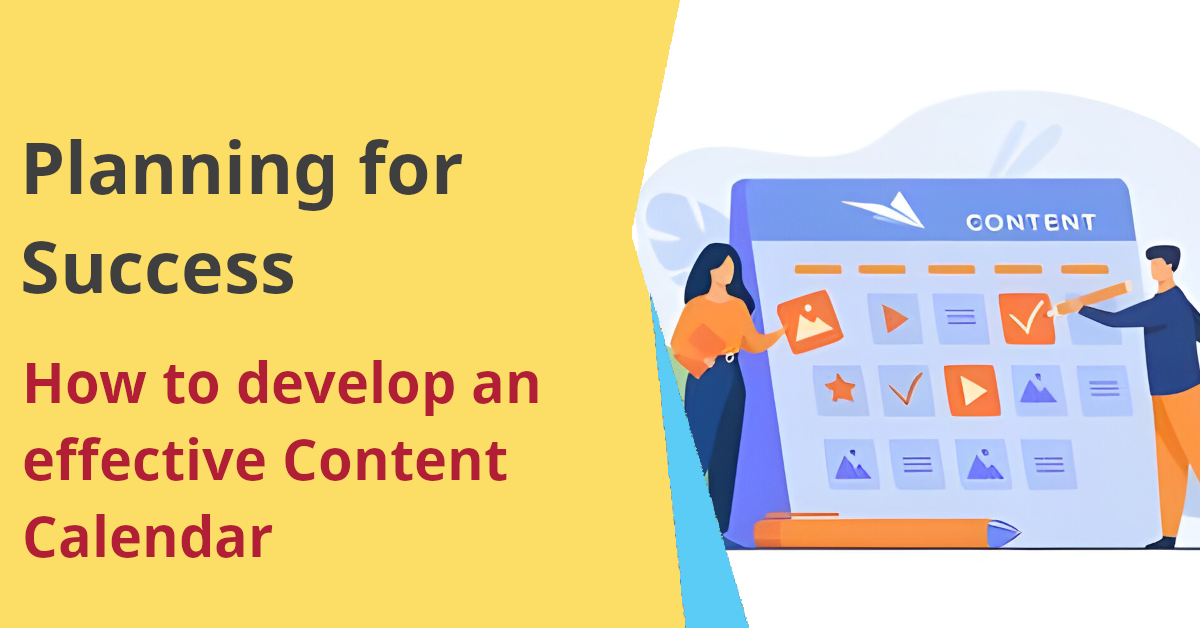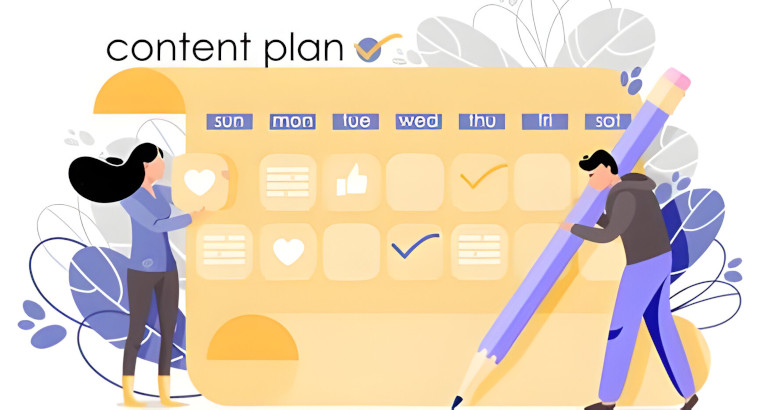
Planning for Success: How to develop an effective Content Calendar

Back in ’98, I was having a chat with my mate, Paul, at a café in Brisbane city. Over a cuppa (and a rather questionable sandwich), Paul talked about how he struggled with his website’s content. He was posting erratically, forgetting important dates, and frankly, it was a hot mess! That’s when I realised that without planning, even the most amazing content can lose its magic. If you’re looking to get organised and want to know how to develop an effective content calendar, you’re in the right place. Let’s dive in! 😊
Definition of a Content Calendar
So, what’s this buzz all about? A content calendar, sometimes known as an editorial calendar, is essentially your roadmap for content creation. It’s a visual workflow that details what you’ll post, when, and where. Think of it as your trusty sidekick in the crazy world of digital content. Like Batman to your Robin and an essential facet of successful content marketing. 🦸
I remember the first time I tried making one. It was as messy as my mate Paul’s early attempts. I was scribbling on pieces of paper, using different coloured pens, and it looked more like a child’s art project. But, as time went on and with some refinement, it became a vital part of my digital toolkit.
Let’s be real here. Not having a content calendar is a bit like sailing a ship without a compass. You’re floating along, not quite sure where you’re headed.
The importance of planning in Content Marketing Success
If you’ve been in the digital game as long as I have (and that’s a good while, lemme tell ya!), you know that failing to plan is planning to fail. My mum always used to say that, and it’s stuck with me over the years. Having a plan, especially in the world of content marketing, is what sets you apart from the rest. It’s what helps you make a mark and get noticed in this vast digital ocean.
But what happens when you don’t plan? You miss out. On opportunities, on trends, on potential viral moments. And that’s a darn shame. Your content deserves better.
Another thing to ponder – how many times have you scrambled at the last minute to get a post out? How many events or holidays have sneaked up on you, making you kick yourself for not having related content ready? With a content calendar, my friend, those days are long gone.
The Basics of a Content Calendar
Right, let’s get to the nitty-gritty.
What is it?
Picture this: You’re preparing for a marathon. Would you just rock up on the day without any training, hoping for the best? Heck no! In the same way, a content calendar is your training plan. It outlines the content you’ll produce, giving you a clear strategy to follow. And trust me, it’s a game-changer.
Not only does it help you track what’s been posted (and what’s in the pipeline), but it also helps in understanding how different pieces of content interact. It’s all interconnected, just like everything else in the digital space.
The benefits of having a Content Calendar
Now, I’ve been around the block a few times, and I’ve seen folks try to manage their content on the fly. Let me tell ya, it’s not pretty. Having a content calendar, on the other hand, brings a slew of benefits to the table.
First off, it brings consistency. Consistency in posting is what gets you noticed and remembered. Imagine if your favourite telly show aired at random times without any rhyme or reason. Annoying, right? It’s the same with your content.
Moreover, with a content calendar, you’re more strategic. You can time your posts to coincide with events, holidays, or trending topics. It’s almost like being able to see into the future. 🧙♂️
Lastly, and this one’s a biggie, it reduces stress. No more last-minute rushes or content droughts. It’s smooth sailing all the way.
Different Types of Content Calendars
Alright, let’s get something straight. Not all content calendars are created equal. Depending on your needs and platforms, you might lean towards one type over another.
- Editorial calendars, for example, are perfect for bloggers and news websites. They focus on long-form content, detailing topics, deadlines, and publishing dates. It’s like your personal assistant, helping you churn out high-quality blogs consistently.
- Social media calendars, on the other hand, are your go-to for platforms like Twitter, Insta, and Facebook. They’re more dynamic, focusing on short bursts of content, and are adjusted frequently based on trends.
- And then there’s the hybrid, which combines both. Handy if you’re juggling multiple types of content. So, it’s all about finding what fits your groove, ya know?
The key components of an Effective Content Calendar
Let’s chat about what makes a content calendar shine.
Content Types (e.g. blog posts, videos, infographics)
Diversity is key! Just like a well-balanced diet, your content should have a mix of different types. Blog posts are your bread and butter, providing in-depth insights. But don’t shy away from videos or infographics. Did you know that humans process visuals 60,000 times faster than text? That’s a random fact for ya! So, sprinkle in some visual content for added oomph.
Publishing Dates and Frequency
This isn’t just about slapping on a date and calling it a day. It’s about understanding your audience’s habits. When are they most active? What days and times work best?
Don’t forget about your frequency either. While it’s tempting to post every day, sometimes less is more. Quality trumps quantity every time. But hey, that’s just my two cents.
Content Themes or Series
Ever binged a series on Netflix? Content themes work similarly. By creating a series of related posts, you can dive deep into a topic, keeping your audience hooked and coming back for more. Just like that cliffhanger at the end of your favourite show. 😉
Target Audience Details
Who are you talking to? Understanding your audience is paramount. It’s what makes your content resonate and stand out. Dive deep. What do they like? Dislike? Dream about at night? By tuning into their wavelength, you’ll create content that truly connects.
Measuring success with Key Performance Indicators (KPIs)
It’s not just about creating and posting content. It’s about seeing what sticks. KPIs help you understand what’s working and what’s not. It’s a bit like baking. You tweak the ingredients until you get that perfect loaf of bread. And with KPIs, you’re tweaking your content for optimal results.
Content Creator partnerships
Remember when I mentioned my mate, Paul? He once tried to manage all his content solo. It didn’t end well. By assigning roles and responsibilities, you ensure a smoother process. Know who’s doing what, and by when. It’s as simple as that.
How to develop an effective Content Calendar: Key Steps
Alright, let’s roll up those sleeves and get cracking! Creating a content calendar might seem daunting at first, but once you’ve got the hang of it, it’s as easy as pie. Speaking of pie, I once tried my hand at baking. Let’s just say… it was a disaster, but it made me realise the importance of following steps in the right order. So, here’s a slice of advice on how to piece together your content calendar, step by step. 🥧
Step 1: Setting your content goals
Right out the gate, you need to know where you’re headed. What’s the purpose of your content? Is it brand awareness? Lead generation? Or simply to engage with your audience? Just like in life, knowing your destination makes the journey a tad bit easier.
Step 2: Identifying your target audience
I’ve said it before, and I’ll say it again – it’s all about your peeps. Who are you creating content for? Delve into demographics, psychographics, and, heck, even their favourite breakfast cereals if you can! The more you know, the better your content will be.
Step 3: Brainstorming content ideas and themes
Here’s the fun bit! Gather your team, order some pizzas, and let the ideas flow. Or if you’re flying solo, find a quiet spot, and let your imagination run wild. Remember that time when flared jeans were a thing? Think outside the box and go beyond the usual.
Step 4: Allocating resources (time, team members, tools)
Unless you’ve stumbled upon a magic lamp recently (and if you have, give me a shout, will ya?), you’ll need to allocate resources. Who’s responsible for what? Which tools will help you out? Time’s ticking, so plan wisely.
Step 5: Deciding on publication frequency
Now, I’ve seen folks go overboard, churning out content like there’s no Paulorrow. And others? Well, they’re like that one uncle who visits once every blue moon. Find a balance that works for you and your audience.
Step 6: Placing the content on the calendar
Alright, captain! Plot your course. Lay out your content on the calendar, keeping in mind any special dates or events. And here’s a wee tip – leave some gaps for spontaneity. You never know when inspiration might strike!
Step 7: Assigning roles and responsibilities
As much as we’d like to, we can’t do it all. Assign roles. Who’s writing? Who’s editing? Who’s in charge of the ever-so-important memes? (Because, let’s be honest, who doesn’t love a good meme?) Make sure everyone’s on the same page.
Tools and Resources
We live in a golden age of technology. There’s a tool for everything – even for counting the number of times you say “um” in a day. (I checked, and I’m at 27 and counting…)
Digital tools and platforms for content calendar creation
Alrighty, folks! Whether you’re a tech whizz or someone who still fondly remembers dial-up internet (oh, the nostalgia!), there’s a tool out there for you. Platforms like Trello and Asana are user-friendly and offer a visual layout. And for those who like to keep it simple, Google Calendar works a treat. Each has its own vibe, so take ’em for a spin and see what jives with you.
Printable content calendar templates
For the old souls out there (and I mean that in the most endearing way possible), printable templates are a godsend. Nothing beats the feeling of pen on paper, right? Plus, they’re great for sketching out ideas on the fly.
Integrations and plugins for providing Content Calendar reminders
WordPress Editorial Calendar Plugins:
- Strive Content Calendar: A new WordPress plugin that simplifies planning and scheduling blog posts. It offers a beautiful editorial calendar, post statuses, custom checklists, and post revisions. You can even visualize all drafts on your site using the Pipeline feature
- Editorial Calendar: This long-standing plugin provides a calendar view in your WordPress dashboard. Easily see upcoming posts, schedule them with drag-and-drop, and manage drafts. It’s a handy tool for content creators
Google Calendar Add-ons & Extensions:
- Fellow.app: Boost productivity with Google Calendar extensions. While not specifically for content calendars, these add-ons enhance collaboration and time management within teams
- Slack Integration: Connect your Google Calendar to Slack. Receive custom reminders before events, daily digests, and weekly summaries. Keep your team informed and on track
Advanced Tips for Content Calendar Management
Let me share some golden nuggets I’ve picked up over the years.
Adapting to changes and staying flexible
Just like in a game of Twister, flexibility is key. The digital landscape is always shifting, so be ready to pivot when needed.
Incorporating holidays, events, and trending topics
Did you know International Talk Like a Pirate Day is a thing? Aye, it is! Keep an eye out for quirky holidays and trending topics to add some zest to your content. Arrr!
Analysing and iterating based on performance data
Dive deep into the numbers. What’s working? What’s not? Adjust your sails accordingly.
Ensuring content diversity to cater to various audience segments
Your audience is a mixed bag of wonderful. Ensure your content caters to their varied tastes. A sprinkle of this, a dash of that – mix it up!
Common mistakes and how to avoid them
Alright, let’s address the elephant in the room. We all make mistakes. Heck, I once spent a week promoting an event that had already happened. Yikes! But, like my gran always said, it’s not about the mistakes you make, but how you recover from them. So, here’s a rundown of pitfalls and how to sidestep them.
Overcommitting and burning out
The enthusiasm’s great but remember – it’s a marathon, not a sprint. Pace yourself. Set realistic expectations and don’t bite off more than you can chew.
Not reviewing and updating the calendar regularly
A content calendar isn’t a ‘set it and forget’ deal. It needs regular check-ins. It’s like watering a plant; a bit of attention can lead to blooming results.
Ignoring analytics and audience feedback
This one’s a biggie. Not tuning into what your audience is saying is like trying to dance with two left feet. Awkward! Listen, adapt, and keep the dance floor buzzing.
Not aligning content with brand voice or goals
Stay true to your brand’s voice. Don’t jump on every trend just because it’s “in”. If it doesn’t fit with your brand’s ethos or goals, it’s best left alone.
In closing
Content planning is more than just jotting down ideas. It’s about understanding your audience, staying consistent, and adapting on the go. It’s been a journey, both enlightening and fun, delving into this topic with you all. Remember, every piece of content is a story waiting to be told. So, tell it well.
Thanks for hanging out with me, mates! Keep shining, keep creating, and always plan with passion. Catch you on the flip side! 🌟 #ContentIsKing

